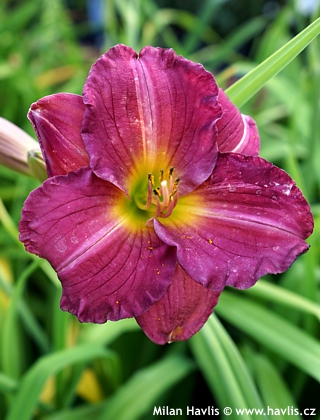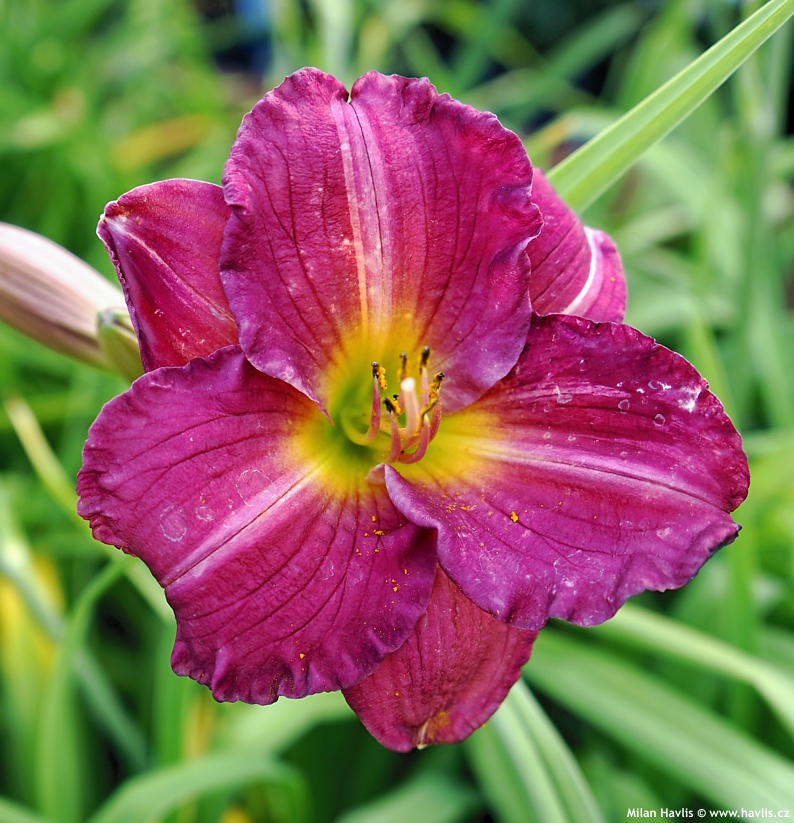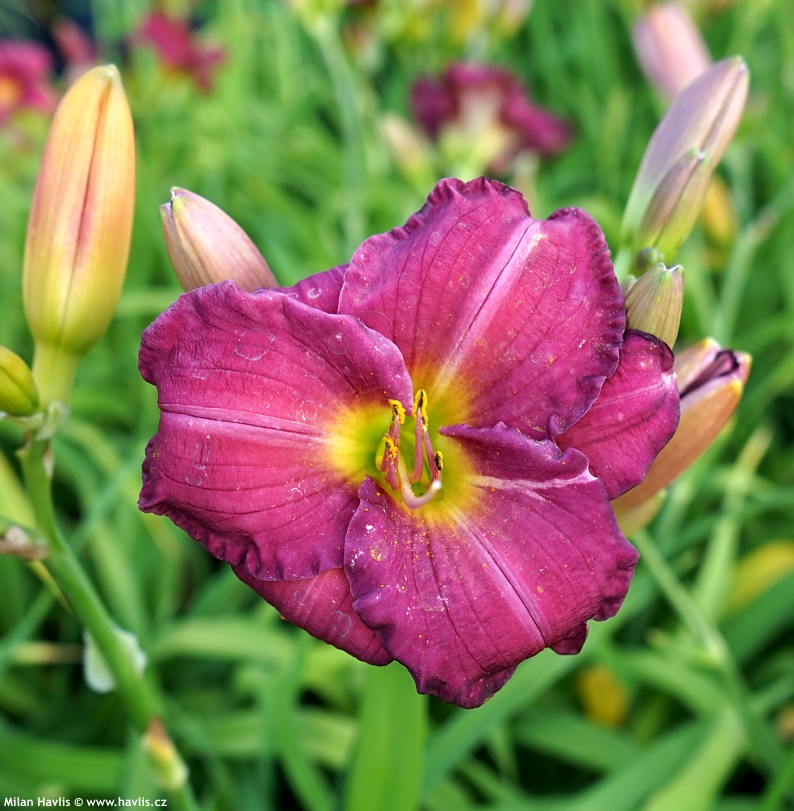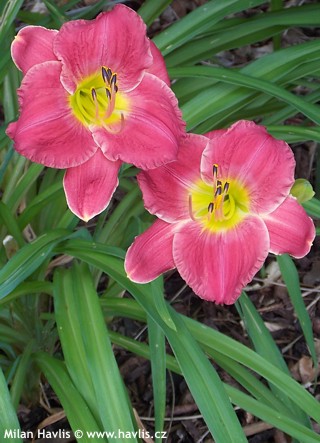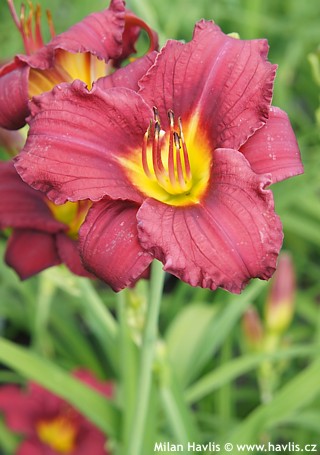Hemerocallis 'SILOAM ROYAL PRINCE' daylily


Hemerocallis
Daylilies are flowering queens for one day. Each bloom lasts a day but there is no need to worry – every stem bears more blooms and as the plants grow older they have numerous stems each. This low-maintenance perennial is a miracle for those who have limited time to spend looking after their gardens because apart from occasional watering on hot and dry summer day it needs ABSOLUTELY NOTHING. And still it can leave us gazing at their beautiful, lily-like blooms of every possible colour you can think of (except for blue and black).
Siloam Royal Prince is a rich magenta red daylily. It has no eye and the throat is yellow-green. It blooms in midseason (July) on about 40-50 cm tall stems.
Siloam daylilies were bred by Pauline Henry from Arkansas, USA. She introduced her first three varieties in 1963 and continued until 2000 when she died. Altogether she bred and named 450 cultivars many of which are used for further crossbreeding.
The leaves are deep green, strong and healthy. They appear early in the spring and persist until winter unlike spring bulbs whose leaves wither away after flowering. Apart from occasional slug attack there are no pests or diseases they would suffer from. Put your day lilies on a sunny spot and fertilize it for better flowering every spring, if you want to. It tolerates all types of soil, preferably it likes moist soil. Very hardy to min. -40°C (USDA zone 3).
Last update 11-08-2014

































